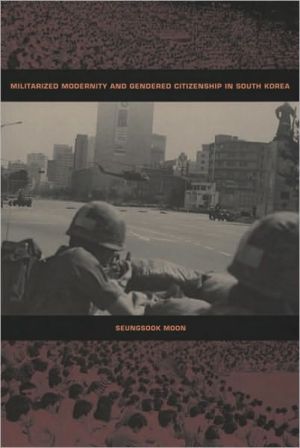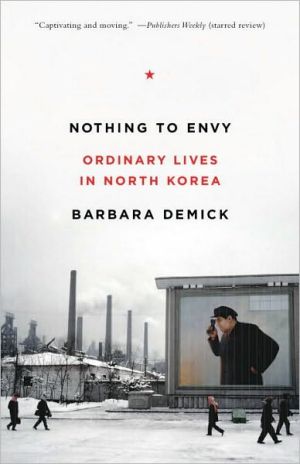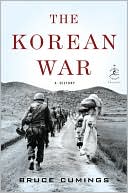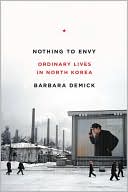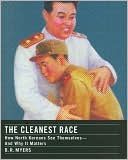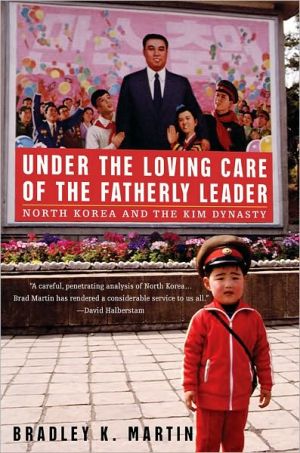Militarized Modernity and Gendered Citizenship in South Korea
This pathbreaking study presents a feminist analysis of the politics of membership in the South Korean nation over the past four decades. Seungsook Moon examines the ambitious effort by which South Korea transformed itself into a modern industrial and militarized nation. She demonstrates that the pursuit of modernity in South Korea involved the construction of the anticommunist national identity and a massive effort to mold the populace into useful, docile members of the state. This process,...
Search in google:
A postcolonial feminist study of the formation of contemporary political subjectivities in South Korea, framed by the rise and decline in 20th century militarization.
MILITARIZED MODERNITY AND GENDERED CITIZENSHIP IN SOUTH KOREA\ \ By Seungsook Moon \ Duke University Press\ Copyright © 2005 Duke University Press\ All right reserved. \ ISBN: 978-0-8223-3627-3 \ \ \ \ Chapter One\ THE HISTORICAL ROOTS AND THE RISE OF MILITARIZED MODERNITY \ To build the economy and strengthen national defense, national solidarity and total unity are the most important things for us in confrontation with the communist North. The most harmful things for us are corruption, impropriety, and the lack of discipline. -Park Chung Hee, in a cabinet meeting on November 12, 1976\ Historians of ideas usually attribute the dream of a perfect society to the philosophers and jurists of the eighteenth century; but there was also a military dream of society; its fundamental reference was not to the state of nature, but to the meticulously subordinated cogs of a machine, not to the primary social contract, but to permanent coercions, not to fundamental rights, but to indefinitely progressive forms of training, not to the general will but to automatic docility. -Michel Foucault, Discipline and Punish\ Few dreams could be more enchanting to leaders of twentieth-century Korea than that of building a wealthy and strong nation. Turning such an ambitious dream into reality in the face of uneven domestic and internationalpower relationships entailed the discovery of individual members of the nation as useful bodies, and the remolding of those members into useful and docile instruments of the nation-state. Indeed, it was a nightmarish process of dehumanization that underlay the realization of the nationalist dream during the period of military authoritarian rule, inciting popular protests by workers, intellectuals, and students. This chapter traces how nationalist intellectuals imagined the Korean nation and its members at the end of the nineteenth century and how Japanese colonial rule informed the Korean path to modernity pursued by the postcolonial military regimes. Then it discusses the emergence of militarized modernity and its trajectory during the period of military authoritarian rule, focusing on its defining characteristics: the construction of the Korean nation as the anticommunist body politic, the remolding of individuals into useful and docile members of the nation through "discipline" and physical force, and the integration of military service into the organization of the industrializing economy. The anticommunist national identity was crucial to disciplinary control over members of the nation in that it provided ruling regimes with ideological justification for the surveillance, normalization, and repressive violence exercised over the people. As discussed in chapter 2, the militarization of the economy resulted from the imperative to remold men to accept military service.\ The development of militarized modernity as a sociopolitical and economic formation in the period of military rule resulted from the coordinated use of various techniques for discipline and punishment that have existed in Korea and elsewhere in an effort to build a modern nation under the peculiar combination of historical conditions of national division, war and military confrontation, postcolonial ambivalence to modernity, and the urgency to catch up with advanced nations. Emerging earlier than other characteristics of militarized modernity, the anticommunist national identity was consolidated in the 1960s through the Korean involvement in the Vietnam War, as well as the continuing military confrontation with North Korea. Park Chung Hee's regime also adopted new and old techniques of remaking the populace into useful and docile members of the nation in the 1960s, including the institution of the resident registration system, the ubiquitous display of anticommunist mottoes, the revival of administered mass organizations and the conversion system, and the use of schools and the television network. The military service extra-points system, an element of the militarized labor market, also began in the early 1960s. It was in the mid-1970s that other central elements of the militarized labor market, such as the enforcement of military service completion as a precondition for employment and the conventional recognition of military service as work experience, were established. The pursuit of militarized modernity reached its peak in the 1970s, the decade of extensive mass mobilization for building heavy industries and "self-reliant national defense," and began to show some signs of decline in the 1980s.\ This historical discussion is intended to offer a larger context for understanding how the gender politics of membership in the nation have been intertwined with the pursuit of modernity. This discussion also suggests that, reflecting the dark side of modernity grasped by Max Weber and Michel Foucault, militarized modernity approximates the military dream of modern society, whose members are reduced to efficient tools of a machine producing national wealth and safeguarding national security. While disciplinary modernity in the West, Foucault argues, stemmed from the imperative to manage increasing multiplicities of humans and economic production (1979, 218), militarized modernity in South Korea sprang from the combination of the following conditions in contemporary Korea: that the postcolonial state had to cope with the exigencies of building a modern nation, via the establishment of a national identity and the discipline of its population, in a modern world characterized by increasing "rationalization," all in the context of national division, the Korean War, and the Cold War.\ Having emphasized the peculiarity of Korea, I recognize that militarized modernity in South Korea shares crucial features with fascist modernities in Germany and Japan during the first half of the twentieth century, including the rule of authoritarian regimes involved in preparing and waging war, mass mobilization of the populace through administered mass organizations, and the latecomer's urgency to equal the progress of advanced Western nations. Yet postcoloniality and the national division in the context of the Cold War compel me to distinguish South Korea from Germany and Japan before World War II. Korea's colonization by Japan, the only non-Western colonizer, intensified South Korea's need to catch up with modern nations and its postcolonial ambivalence toward modernity that stemmed from the indelible historical connection between modernity and the advanced Western countries as dominant colonizers (Seungsook Moon 2002c, 483). Showing a historical parallel to South Korea, the divided Germany during the Cold War was followed by the rule of democratic regimes and the critical reflection on its fascist past.\ IMAGINING MODERNITY AT THE TWILIGHT OF CONFUCIAN SOCIETY\ The hegemonic meaning of modernity in postcolonial South Korea has hinged on this latecomer's perceived imperative to build a modern nation with an industrial economy and a strong military. The equation of modernity with economic and military strength is not peculiar to postcolonial Korea; this view of modernity has its roots in the violent encounter between colonizing powers and colonized societies in the past.\ Facing the internal and external challenges of frequent peasant rebellions and of foreign powers who extracted economic and military concessions, the ruling elite of the Choson Dynasty (1392-1910) was forced in the late nineteenth century to adopt some reformist ideas to maintain its privilege to rule. Those reformist ideas were articulated by a group of Confucian scholars known as the kaehwap'a (enlightenment faction), who advocated the adoption of Western technology to strengthen the nation. The enlightenment faction was divided into a radical faction, supporting the reduction of monarchical authority, and a moderate faction, espousing the preservation of the Confucian monarchy. Kim Yun-sik (1835-1922), a Confucian bureaucrat and member of the moderate faction, articulated this second position in the notion of tongdosogi (Eastern way, Western technology). Resembling the elite nationalist strategy of nineteenth-century Bengal (Chatterjee 1993), this notion separated the material sphere, in which the West was advanced, from the mental sphere, in which the East was supposed to be superior to the West. Accordingly, Kim used Western technology to establish an arsenal and manufacture new weapons but rejected other aspects of Western culture, including democratic ideas and institutions. At its core, the notion of tongdosogi was devised to deal with the double challenge of preserving the Confucian order while at the same time adopting advanced technology from the West to "modernize" the military and the financial system. Hence it ignored the urgency of implementing the broader social and political reforms advocated by the radical enlightenment faction. Adopting this ideology after the Sino-Japanese War (1895), in which Japan had been victorious, the Choson monarchy attempted to reinforce its power and renamed itself Taehanjeguk (the Empire of Korea). During the short period of Taehanjeguk (1897-1905), the ruling elite rushed into the importation of Western technologies to build power plants, streetcars, telephone lines, a telegraph system, and railroads (Kang Man-gil 1985).\ The instrumental view of modernity implied in the precolonial notion of tongdosogi was embraced by the ruling elites of postcolonial South Korea. The hegemonic meaning of modernity highlighted the imperative to build a wealthy nation and a strong army. In particular, the significance of military power to the modern nation was so compelling in the age of colonialism that some nationalist intellectuals (historians, folklorists, and writers) displayed a militaristic orientation in writing a nationalist history. For instance, Shin Ch'ae-ho (1880-1936) and his admirers glorified the military tradition of honor and patriotism in Korean history against the backdrop of (effeminate) colonized Korea (Eckert 2000, 134). This historical legacy of imagining modernity primarily as military and economic superiority has had a lasting impact on the way in which the postcolonial state in South Korea imagined modernity, particularly during Park Chung Hee's rule (1961-79).\ Coterminous with the notion of tongdosogi was the instrumental view of individual members of the modern nation among nationalist intellectuals. Introducing Western liberalism in his Soyugyonmun (Observations on a Journey to the West [1895]), Yu Kil-jun (1856-1914) imagined members of the Korean nation essentially as dutiful nationals subject to continuous mobilization and control, whose education and improvement were to be undertaken for the purpose of enriching and strengthening the nation-state. This view influenced many other nationalists at the turn of the century, including An Ch'ang-ho. During the first decade of the twentieth century, such dutiful members of the nation acquired a new name, kungmin, meaning, literally, "people of the state." Commonly used to refer to the members of the body politic in post-colonial Korea, this term was imported from Japan as a result of the increasing number of Koreans who were studying there in the 1900s. Noteworthy in the discourse of kungmin produced by nationalist newspapers is its connection to the military. Hwangsong Newspaper (1898-1910) stated that military service was the most important duty for kungmin otherwise entitled to rights given by Heaven. In its distinction between kungmin and minjok (ethnos), Taehan Daily Newspaper (1904-10) defined kungmin as the artificial formation of collective membership equipped with a barracks mentality constitutive of the strong state, contending that an ethnos could not survive in the modern world without transforming itself into kungmin. The nationalist discourse of kungmin constructed not only the self of the modern nation but also its external and internal others (Pak No-ja 2003, chap. 1). As discussed hereafter, this binary opposition of the self and the other operates as a central mechanism of disciplining kungmin to embrace anticommunism during the period of militarized modernity.\ LEGACIES OF COLONIAL MODERNITY: SURVEILLANCE AND NORMALIZATION\ The nationalist imagination of individual members of the nation as useful instruments for building a strong and wealthy state became a tumultuous reality during the period of Japanese rule, based on a "highly articulated, disciplined, penetrating colonial bureaucracy" (Cumings 1984, 487). In order to effectively control Koreans, the colonial government established the centralized national police and intelligence network (480). Yet colonial control was more than repressive domination leading to the painstaking disciplining of the colonized population to make them useful and docile instruments to enrich and strengthen imperial Japan. The police were not merely a repressive state apparatus but also a disciplinary institution controlling minuscule details of people's quotidian lives. The police oversaw the implementation of various programs to eradicate "indigenous lifestyles" and make people more useful and efficient, including campaigns for short hair for men, wearing colored clothes (as opposed to traditional white Korean dress), and saving money. The police monitored public hygiene, gathered a range of information about local people, and directed them in farming and in building and repairing roads (Chulwoo Lee 1999, 37). The sprawling expansion of the colonial government into the regulation of infinitesimal details of daily life enhanced Korea's "governability" as the government attempted to remold Koreans into colonial subjects of Japan (40). As I will discuss later, the postcolonial state under military rule appropriated similar disciplinary techniques in the name of building the modern nation.\ While the intensification of the colonial state's disciplinary control over Koreans reflected a common feature of the modern state, there was a certain peculiarity in the Japanese version. The Japanese colonial state attempted to exercise control over the minds of its members, involving the "conversion" of ideological offenders and close surveillance of them, even after their conversion and release, during the decades of wartime mobilization in the 1930s and 1940s (Lee Chulwoo 1999, 47). This seemingly bizarre legal practice stemmed from the supralegal emperor system (tennosei), which was reinvented through the Meiji reforms. In the name of promoting the "spiritual integration" of Koreans into the Japanese empire, the colonial state enforced thought control to maintain the integrity of the body politic (kokutai). This sort of legal control of the individual mind began with the establishment of the 1907 Security Law that prohibited public meetings and associations, and spiraled down to the 1925 Peace Preservation Law that penalized real and attempted involvement in so-called anti-kokutai organizations. Indeed, the discourse of the kokutai reinvented the meaning of modernity in imperial Japan, opposing the liberal notions of social contract, democracy, and rule of law and stressing the integration of individual members into the totality of the state. According to this view, the expression of individual, class, and ethnic interests was not a healthy outcome of complex modern society but a threat to imperial integrity. While even Nazi Germany did not devise any such legal practice aiming at the conversion of thought criminals, postcolonial Korea inherited the "conversion system" (chonhyangjedo), which was applied mainly to communists, the others of the body politic.\ (Continues...)\ \ \ \ \ Excerpted from MILITARIZED MODERNITY AND GENDERED CITIZENSHIP IN SOUTH KOREA by Seungsook Moon Copyright © 2005 by Duke University Press. Excerpted by permission.\ All rights reserved. No part of this excerpt may be reproduced or reprinted without permission in writing from the publisher.\ Excerpts are provided by Dial-A-Book Inc. solely for the personal use of visitors to this web site. \ \
Introduction : the gender politics of nation building and citizenship in South Korea11The historical roots and the rise of militarized modernity172Mobilized to be martial and productive : men's subjection to the nation and the masculine subjectivity of family provider443Marginalized in production and mobilized to be domestic : women's incorporation into the nation684The decline of militarized modernity and the rise of the discourse of democratization975The trajectory of men's citizenship as shaped by military and economic mobilization1236The trajectory of women's citizenship as shaped by their economic marginalization as reproducers147Conclusion : modernity, gender, and citizenship173
\ From the Publisher“In this provocative book, Seungsook Moon demonstrates how the South Korean state’s dual push for military security and industrial modernization reinforced gendered distinctions in the citizenry. She skillfully shows the intersection between compulsory military service for men and the marginalization of women in the economy through the symbolic and material valorization of men’s military service. The book masterfully articulates the demands of the state on Korean male and female citizens and the repercussions for the patriarchal family, for class identities among men and women, and for Koreans’ increasingly openly contested claims to the rights of full citizenship.”—Mary C. Brinton, author of Women and the Economic Miracle: Gender and Work in Postwar Japan\ “Seungsook Moon has given us a sharp and detailed account of just how a state goes about militarizing men’s sense of their own manliness for the sake of its larger modernity project. This nuanced feminist case study will be of interest to all of us trying to disentangle gendered citizenship from militarized nationalism.”—Cynthia Enloe, author of Maneuvers: The International Politics of Militarizing Women’s Lives\ \ \
